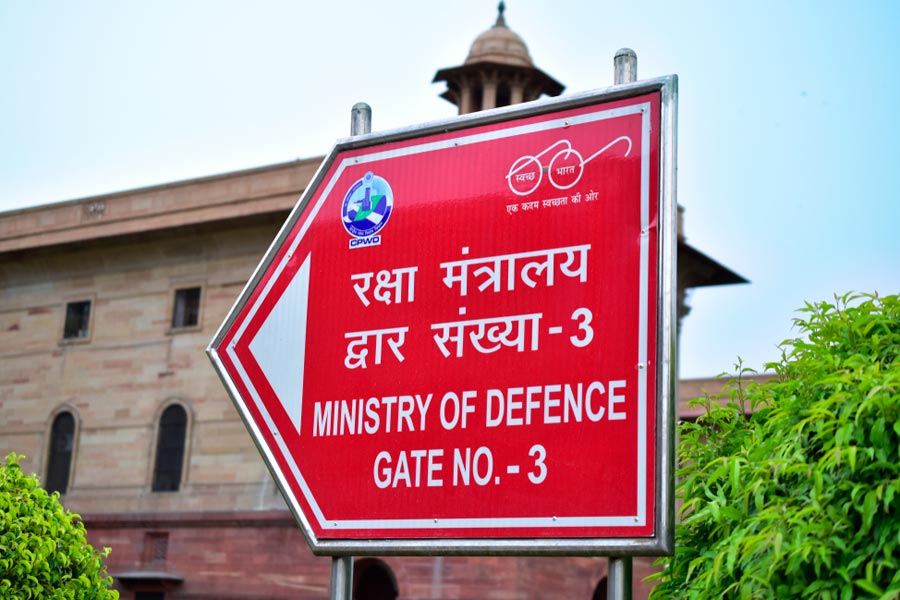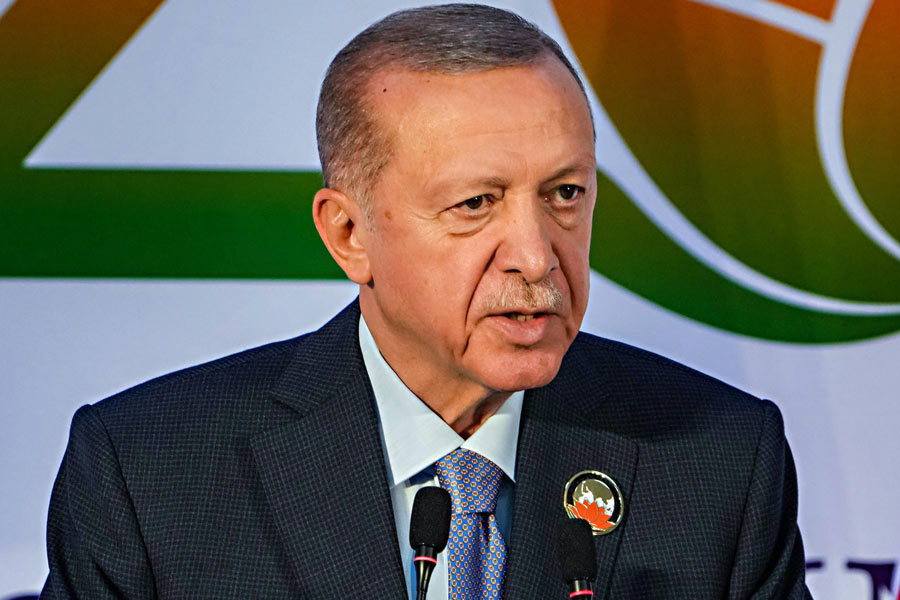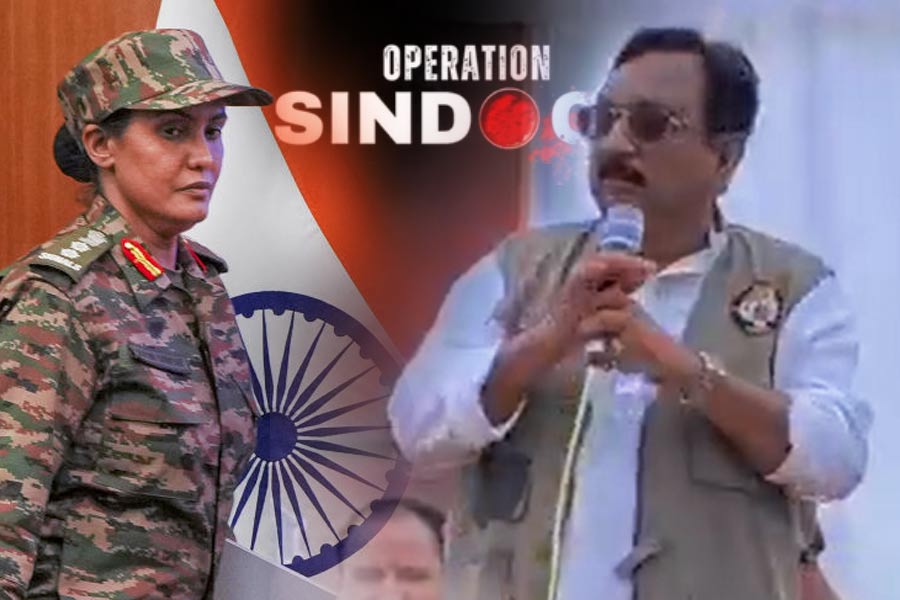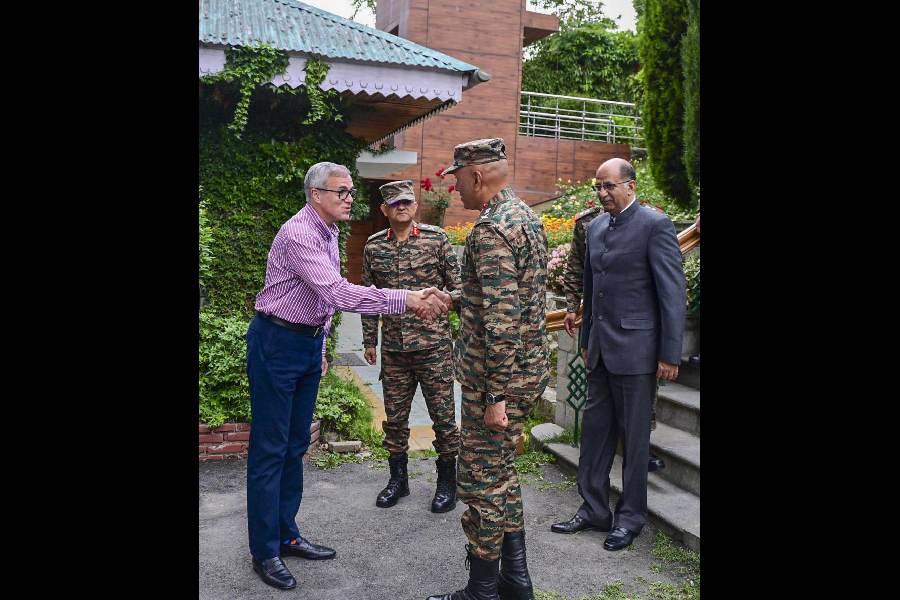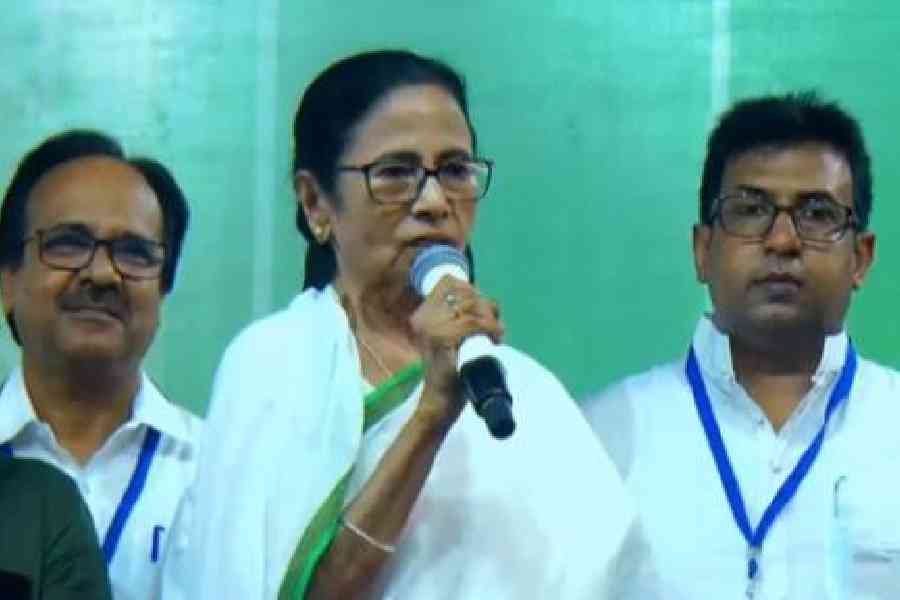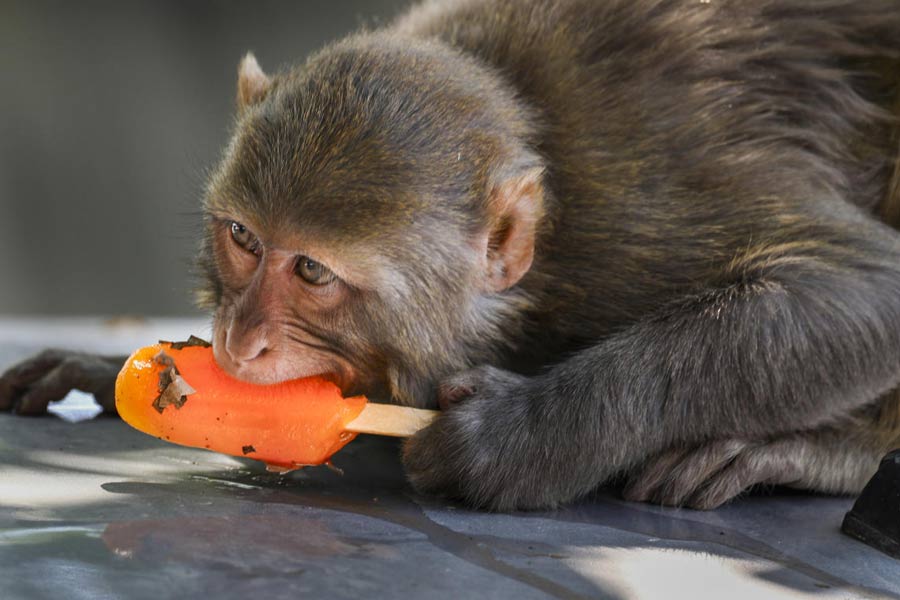 |
What is the most common theme pervading the city’s Durga puja pandals from north to south and even across the Hooghly? Tagore, Tagore and more Tagore. On the eve of his 150th birth anniversary, the bearded Bard has made it to the hoardings of hordes of puja committees.
Sumit Dutta, the artist planning the puja at Kazibagan Lane Unnayan Samity puja in Howrah, has a famous rival in the neighbourhood also playing the Tagore card and, therefore, breathing down his neck. “Ja competition hobe, ebar Rabindranath-er opor hobe (The competition this year will be focused on Tagore),” he says.
Ranjit Dutta of Dhiren Charu Smriti Sangha, Beleghata, has heard that many big clubs between Joramandir and CIT Road were also “doing Tagore”. “I can’t help it,” he shrugs.
Faced with an onslaught of commonality, most artists and organisers are banking on distinction in terms of interpretation. Tamal Krishna, executing the Kalighat Milan Sangha puja, has taken first two lines Banglar mati, Banglar jol from the Rabindrasangeet but has gone completely abstract. “Tagore used to scribble his lines and then make a pattern of the cancelled-out words. I am producing that pattern using applique work on flat-coloured clothes. Stitched wool will give the image of straight lines but there will be no handwriting on the panels.”
The mandap will also reflect the building style of Santiniketan landmarks. “I am not pasting pictures of Tagore all around,” Tamal says.
Golden Arrow Club of Lake Market is also making do with just a suggestion of Tagore. “Jiboner dhon kichhui jabe na phyala” is the Tagore line they are using to create dancing figures using throw-away thread reels. “We had thought of a full-fledged Tagore theme but backed away seeing so much competition,” says Rajesh Mukherjee of the club.
Many have Santiniketan as their inspiration while others have chosen specific compositions. “Tagore was open-minded. We are portraying the open-air ambience of Pearson Pally with its Adivasi inhabitants or celebration of Basanta Utsav or open-air education under tree shades. The dolls of Tasher Desh are there to make a statement on his liberal views,” says Ranjit Dutta.
Tasher Desh finds favour also with Kazibagan Lane puja of Howrah. “It will be Durga puja in the land of Tasher Desh. Even our idol will look like a queen of one of the card suites, while Mahishasura will look like a king,” says Sumit Dutta.
Kalitala Sporting Club, off the Anwar Shah Road connector to the Bypass, has chosen the poem Pujar Saj. If the puja is taking place in the zamindar house, facing it is a farmer’s cottage where brothers Madhu and Bidhu live. Clay models have their mother about to embrace Bidhu who is happy in the cheap dress bought by his father as the vain Madhu flaunts a satin dress gifted by the zamindar instead. “The poem will be inscribed on a 22ft mural at the entrance,” says puja committee president Prabir Das. “We chose a specific poem as we thought others may do Santiniketan.”
Barisha Youngs’ Club has gone for an all-inclusive view. “People will pass through five rooms, each paying tribute to a separate facet of Tagore’s talent. In the first, his talent sprouts as a boy’s hand writes the rhyme Amsattwa dudhey pheli… The second tells the story of Birpurush, as Tagore’s voice recites the children’s poem. The third room is dedicated to his paintings. The fourth has a scene from Dakghar while the fifth picks up scenes from three dance dramas — Chitrangada, Shyama and Tasher Desh,” explains Atish Ohdedar of the club.
But Dhakuria Sarbojanin Durgotsab stands apart in its tribute. To the right as one enters is a huge replica of the stolen Nobel medal in plaster of Paris and fibre glass. Next to it are sinister impressions of two hands covered with soot. “It is a disgrace that we have failed to protect the mark of honour that he earned for us. No amount of celebration can forgive such a crime,” says Swapan Pal, who has conceived the theme.


